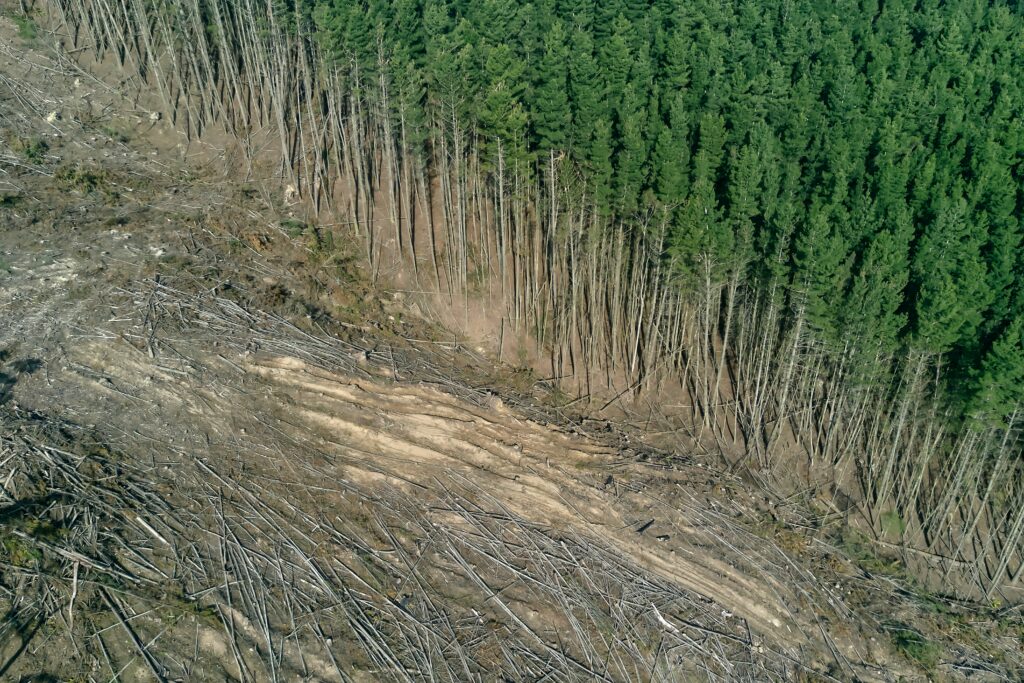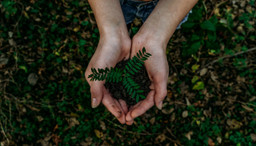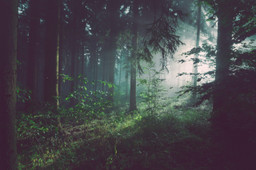
Afforestation and Reforestation: The Forests of the Future
Afforestation and reforestation are recognised as key strategies for tackling our climate crisis and halting ecosystem degradation and biodiversity losses.
Afforestation is about creating new forests where no forest currently stands. Reforestation is about the restoration, regeneration, and expansion or improvement of areas where forests or woodlands either stand or once stood.
Both are essential for remedying our planet’s ills. To sequester carbon, repair the world’s water cycles, and provide for the needs of people and of wildlife, we need to look urgently at these two activities.
However, creating new forests and restoring old ones is not as straightforward as simply planting trees. Which trees are planted, where they are planted, and a wide range of ecological factors determine whether these are true forests and woodlands, or only plantations of trees.
What is more, the creation of forests can have profound impacts, negative as well as positive. A deep understanding of ecology and broader weather and societal systems is essential to determining where exactly such projects should be undertaken, and the impacts they will have.
What is a Forest?
To understand the importance of forests and the best strategies for afforestation and reforestation, we must first and foremost understand that a forest or woodland is far more than just a plantation of trees.
Forests are thriving ecosystems – complex systems of life and interaction. From the tree canopy to the complex web of life below the surface of the soil, the forest is one. To focus on the trees alone is to fail to see the whole. All too often, we quite literally fail to see the forest for the trees.
To understand how to conserve and protect the forests which we have, and to develop strategies to create the new forests of the future, we need to look at the bigger picture.
The UN’s Food and Agriculture Organisation (FAO) defines a forest as:
“Land spanning more than 0.5 hectares with trees higher than 5 meters and a canopy cover of more than 10 percent, or trees able to reach these thresholds in situ. It does not include land that is predominantly under agricultural or urban use.”
Using this definition, the Global Forest Resources Assessment 2020 found that forests covered 4.06 billion hectares – approximately 31% of the world’s land area.
However, many different definitions of the term ‘forest’ exist. This can lead to challenges in determining which areas currently count as forests, and which tree-based ecosystems may only do so in the future.
No matter how we define forests, however, it is vitally important to recognise that a forest is far more than just trees.
The Benefits Forests Bring
Forests are one of the most important ecosystems on Earth, since they are:
- Crucial carbon sinks
- Essential to the world’s water cycle
- Vital for soil health and protection
- Genetic preserves and biodiversity hotspots for a wide range of plants and wildlife
- Integral to human existence – providing for many basic needs and protecting areas of human habitation from issues such as drought, flooding, and extreme weather events.
The Problem of Deforestation
Although we recognise the vital role that forests play in preserving life on Earth, global deforestation continues at an alarming rate.
Climate change, timber and fuel harvesting, the pressures of encroaching agricultural land, overgrazing, and a range of other problems all contribute to this problem. And for any reforestation and afforestation to be successful in the long term, these issues must be addressed.
At COP26 in Glasgow, leaders of more than 100 countries containing around 85% of the world’s forests agreed to expand upon existing targets, pledging to end deforestation by 2030. Nevertheless, rates of deforestation increased between 2014 and 2020, and information is lacking on how these ambitious goals are to be achieved.

The Challenges of Reforestation and Afforestation
It is crucial that we not only halt deforestation, but also increase forest cover.
According to a special report by the Intergovernmental Panel on Climate Change (IPCC), to avoid a temperature rise of more than 1.5 degrees above pre-industrial levels, by 2050 there must be an increase in global forest cover of 10 million square kilometres (3.9 million square miles; an area the size of Canada).
But while reforestation and afforestation schemes are proliferating around the globe, the world is not on track to meet the target of the United Nations Strategic Plan for Forests: a 3% increase of forest area by 2030.
The challenges of reforestation and afforestation mean that it is not always as easy to achieve these goals as it may at first appear. Holistic, site-appropriate design and careful thought regarding wider ecological and societal systems is vitally important to long-term success.
Not all forests are created equal when it comes to climate. And while reforestation and afforestation are important, they should not distract us from the crucial importance of cutting carbon emissions.
Why Planting Trees Alone in Not Enough
As mentioned above, forests are far more than just trees. Recognition of this is crucial to any successful scheme; we must consider not only the trees planted, but also the other layers of vegetation, the wildlife, hydrology, soil, and a range of other factors.
Reforestation and afforestation schemes are generally most successful when taking into account their connection to human needs. Natural systems for the benefit of broader ecology can benefit people too.
Several schemes I have worked on have recognised that, in many regions, growing trees requires looking holistically at social and environmental systems. Harnessing non-timber forest products (NTFPs) has often been crucial to changing the practices and thought patterns of local communities, and to meeting sustainable development goals across many sectors.
When we take people into account, as well as ecosystems, new schemes are far more likely to endure and succeed over time. You can read some other brief notes on lessons I have learned about ecosystem restoration here.
Why Location is Key
Where new forests are created is also a key consideration. It is important to remember that forests have a huge impact, not only in their immediate environs but also on broader weather patterns.
To give just one example, a study published in Nature has highlighted the impacts that planting new trees across Europe will have on the continent’s rainfall.
This study highlights an important factor in reforestation and afforestation efforts. Since planting trees can bring additional rainfall, even far from the planting site and in neighbouring countries, all impacts from potential schemes must be considered on a broad scale. Therefore, the location for new tree planting must always be carefully considered.
Of course, planting trees can bring huge benefits, but holistic thinking is essential. It is essential to consider all of the potential impacts, locally and in the broader region, of any reforestation or afforestation scheme.
It is also important to think about where reforestation and afforestation efforts will have the greatest beneficial impacts, and be most successful. Targeting priority locations is key.
Types of Forest
In order to successfully create the forests of the future, we also need to develop a deep understanding of different types of forest ecosystems that we must preserve and/or create.
It can be helpful to identify different forest types based on how they were formed and how long they have existed, as well as their ecology and the species they contain.
Old-Growth Forests
An old-growth or primary forest is defined by the FAO as a naturally regenerated forest of native tree species, with no clearly visible indications of human activity or significant disturbance of its ecological processes.
Half of Western Europe’s forests are estimated to have been cleared before the Middle Ages, while 90% of the old-growth forests that existed in the contiguous United States in the 1600s have been cleared. The global area of primary forest here has decreased by 81 million hectares since 1990.
One positive note is that the rate of loss more than halved between 2010 and 2020, compared to the previous decade. That said, any rate of loss should be recognised as being unacceptable.
The long period of stability during these forests’ existence means that their ecosystems are richly biodiverse. These forests cannot be quickly replicated through reforestation or afforestation, hence it being so crucial that these precious old-growth forests are conserved and protected.
Managed Forests and Woodlands
While we may often think of our forests and woodlands as being ancient, it is important to appreciate that many have long felt the touch of human hands.
The history of tree cover in the British Isles can help us understand the difference between old-growth forests and long-managed woodlands and forests.
If you lived in the British Isles during the Neolithic period, you would have seen a landscape very different from today’s. In around 3000 BCE, you would have seen an almost endless sea of trees, sometimes referred to as ‘the wildwood’.

Now, no truly untouched fragments of the wildwood remain in Britain. The massive virgin woodland that once covered our isles is gone. Ancient pockets of woodland do remain, but all bear, in some way, the marks of human interference. Over hundreds of years, the processes of coppicing, woodland management, and conversion to arable land and pasture gradually eroded the wildwood.
It has been estimated that, by the year 1000 CE, only around 20% of Great Britain and Ireland were still forested. The wildwood had shrunk, becoming closer to the pockets of woodland and managed forest that we see today.1 The same processes have also shaped woodlands and forests elsewhere in the world.
Therefore, we may not be able to quickly or easily reclaim the wildwood, nor return things to how they once were. But: we can protect existing woodland and forest fragments, and begin to reclaim at least a little of what has been lost. We must also recognise that, in many cases, the ecology of these spaces has evolved alongside humanity, and we can not only benefit from, but also often be a part of such systems.
New, Natural, Native Forests
In the short term, secondary-growth forests are typically the best we can hope for from reforestation and afforestation efforts. These are areas of trees and other plants which have regrown after timber or agricultural clearance.
Today, most of the forests of Europe and of the United States – especially in the eastern part of North America – are secondary forests.
Ecologically, these are neither as rich nor as diverse as old-growth forests. However, they can evolve at least some of the same characteristics over time. Exactly how quickly and effectively newly forested areas can do so depends on location, and the specific strategies employed.
Syntropic Food Forests (Agroforestry)
There is a final type of forest to consider when looking at reforestation and afforestation strategies: food forests. These (and other agroforestry systems) are non-natural, human systems which mimic the ecology and function of natural forests.
As well as replicating the beneficial interactions which occur within a natural, native forest, they incorporate plants specifically chosen for their yields and their beneficial impact on the system as a whole. While these should not be confused with native forests, they can be important in developing strategies to increase forest cover for the future.
Delving Deeper into Forest Types
We can understand more about forests by looking at the different types in more detail, based on climate, location, and species combinations.
The forest category classification system of the UN Environment Programme World Conservation Monitoring Centre (UNEP-WCMC) divides the world’s forests into 26 major types, reflecting climatic zones as well as principal types of trees.
These 26 divisions can be classified into six broader categories: temperate needleleaf, temperate broadleaf and mixed, tropical moist, tropical dry, sparse trees and parkland, and forest plantations.
The World Wildlife Fund (WWF) also has its own bioregional classification system, identifying a number of broad forest categories and more specific bioregional types.
Of course, specific strategies for halting deforestation, and for reforestation and afforestation, vary depending on the specific forest type and its location. However, we’ll take a look at some major strategies below:
Reforestation and Afforestation Strategies
Reforestation and afforestation strategies must always take into account the protection of old-growth forests and the conservation and management of long-managed ancient forests and woodland, as well as the creation of new forest areas.
Protecting Old-Growth Forests
While we often focus on planting new forests, protecting old-growth forests is also hugely important. It is vital to recognise just how long these ancient forests took to form, and how difficult it is to replicate them.
We cannot quickly create new forests with the same huge impact in terms of the forest benefits mentioned above, and ecological complexity. Depending on location and composition, these old-growth forests take hundreds if not thousands of years to form.
But studying old-growth forests and learning their lessons is key to developing forests of tomorrow which can continue to evolve and develop much-needed syntropy over time.
Looking After and Improving Managed Forest and Woodland Ecosystems
Where forests have evolved alongside humans and been influenced by human agency for hundreds of years, it is important to undertake management which bears this intervention in mind.
Often, these complex ecological systems have developed around human activities, and can be so enmeshed with them that, if they cease to be managed in the same way, their biodiversity and resilience can suffer.
Our native woodlands represent a large, growing, and remarkably multi-purpose renewable resource. But they are not natural, and have been subject to management for centuries, if not millennia. The wildlife communities that survive within them have developed in tune with these historic management regimes.
We cannot always sustain – or would not necessarily want to return to – such historic management, but we do need to develop approaches that sustain the best features of the woodland, and are adapted to our current and future needs.
In order to determine precisely how ancient woodlands and forests must be managed and restored depends in part on their type.
Semi-natural ancient woodlands have typically been used by humans over the centuries – for example, managed for timber and other industries – but have retained their vegetation during this period. It is these ancient woodlands that we can learn from as we seek to create functioning ecological forests and woodlands in the UK.
Active management strategies for ancient woodlands in the British Isles can be found here.

Typically, ancient woodlands in the UK are defined as areas of woodland that have persisted since 1600 in England and Wales, and 1750 in Scotland. These areas now cover only around 2.5% of the land area and make up 15% of existing woodland.
Also included within this land-area figure are plantations on ancient woodland sites. These are areas where the soils of ancient woodland and some features of their ecology persist, but non-native conifers or hardwood species have been planted between remnants of the ancient woodland species.
These sites must be restored in order to return them to their natural state.
When developing strategies for reforestation and afforestation, it is important to recognise that preserving old-growth and semi-natural ancient woodland and forest ecosystems is the first and most crucial step.
These forests will often provide the seeds for the genesis of new forest projects; we need to study these systems carefully in order to develop the best approach for new woodland and forest creation.
Creating New, Natural, Native Forest
Where we seek to restore ecologically functioning forest cover, or to create new areas of forest, learning from and mimicking old growth or semi-natural ancient forests or woodlands is key. But actually creating new ecosystems can be a challenge.
That said, it is certainly possible to create incredibly valuable new forest ecosystems in a wide range of different locations. Some key approaches are:
- Natural forest regrowth (letting nature take the reins)
- Permaculture reforestation and afforestation/ecosystem restoration
- Miwaki forest creation
- Trophic rewilding techniques
- Agroforestry techniques.
We explore these approaches below:
Natural Forest Regrowth: A Passive Approach
Firstly, it is key to note that, in reforestation, we can sometimes simply sit back and let nature take the reins.
In and around remnants of old growth forest or semi-natural native woodland, it can be possible for an undisturbed site to take on the characteristics of the neighbouring area, and for healthy, ecologically diverse new tree-covered habitat to emerge.
Sometimes, if we want to see new areas of forest, doing nothing at all can be the best approach. Natural forest regrowth is an area in which interest is increasing: stepping back and removing factors which are preventing natural regrowth from occurring.
However, in many situations, the natural environment has been degraded to such a degree that natural repair and natural forest regrowth or new growth is impossible. In such instances, it may often be necessary to take steps before a forest can truly evolve.
There are several different approaches to spur on and enable the formation of new forest ecosystems.
Permaculture Reforestation and Afforestation
One approach to the problems inherent in creating new forests and woodlands is permaculture ecosystem restoration.
This holistic, design-based approach mimics the stages of naturally forming forests’ evolution – while using human intervention to enable the process to continue, and in certain instances, to short-cut this process. This approach underpins many reforestation and afforestation efforts around the world.
Permaculture practitioners working in ecosystem restoration will often look to the area’s hydrology, and may implement earthworks and other techniques to catch and store water and manage its flow across the site.
They will also often work with the soil, using natural biomass to provide conditions suited to tree growth, and the formation of attendant ecological systems. They may often work to promote a healthy, fungal-dominant soil environment.
Trees and plants will be carefully chosen. Restoration projects will typically begin with pioneer species, including nitrogen fixers which will thrive on the site and pave the way for increasing biodiversity, and which are planted among the native trees selected for the eventual forest.
The permaculture process for restoring or creating native forests can be summarised as follows:
- Identify an area where new forest establishment would be beneficial
- Establish details of climate, microclimate, etc, for the specific location
- Map the terrain, establishing existing vegetation cover and details of sectors, soil, water flow, soils, etc
- Identify the strengths, weaknesses, opportunities, and challenges of the site
- Decide whether active or passive methods are required
- If a passive approach is best, remove drivers of deforestation or the causes of lack of forest regrowth
- If active regeneration is required, look at native forest within the specific bioregion, and the historic vegetation of the site; select native tree and under-storey species for inclusion in the new forest
- Create a holistic, big-picture design tailored to the specific site (however large or small)
- Undertake earthworks, amend soils, and make other alterations as required
- Sow, grow, and plant pioneers and key tree and shrub species (seeking to maximise diversity and the number of beneficial interactions within the system)
- Monitor and collect data from the system as it begins to establish
- Establish under-storey layers to broaden biodiversity and ecological strength within the system
- Adapt to change and embrace this as the ecosystem evolves, and, where necessary, consider active management strategies
- Continue to work towards an ecosystem which will be self-sustaining once established.
Miwaki Forest Creation
If we are to meet reforestation and afforestation targets, we need to look at forest creation in a range of locations and at a range of scales. We can look not only at expanding areas of native forest in rural locations, but also at expanding functional ecological forest right into the heart of our towns and cities.
The Miwaki Forest creation method is a way to create new forests in which interest is steadily growing. This method purportedly speeds up the creation of small, ecologically functioning forests, and is particularly notable for its viability on a small scale in urban environments.
By following a specific process involving engineering soil, microbes, and biomass to kickstart natural growth processes, eco-entrepreneur Shubhendu Sharma uses this method to create ultra-dense, biodiverse mini-forests of native species in urban areas. And as you can see from this video, it is applicable both to Europe and to other regions of the globe.
If you are interested in learning more about this method, you can find more information on this website, and view this free online course of 10 videos.
Trophic Rewilding Techniques for Reforestation and Afforestation
So far, we have focused on techniques which prioritise plant restoration in forest creation. However, there are other strategies which involve going one step further in developing true forests: incorporating the restoration not only of plant species, but also of animal species which have historically played an important role in the maintenance and development of these ecological systems.
As we have already discussed, forests are not solely collections of trees. A forest ecosystem depends not only on the relationships between the plants it contains, but also on the complex interactions between those plants and the animals around them, and the fungal networks and other micro-organisms functioning within the system.
Trophic rewilding techniques focus not only on planting, but on the reintroduction of key animal species (or their proxies, if the original species have become extinct), which shape the environment around them. Reforestation efforts might be aided, for example, by the introduction of large herbivores, ecosystem engineers like beavers, or missing seed dispersers.
Such strategies may provide solutions for the restoration of forest environments and their maintenance, and improve the success of reforestation and afforestation schemes in the long term.
Agroforestry Techniques
Creating a food forest or other agroforestry system is not the same as creating a natural forest. However, in terms of combatting our climate crisis and tackling biodiversity losses, establishing one of these tree-centred ecosystems can have very similar benefits.

While such systems should never be viewed as a replacement for native forests, they can improve the ecological diversity – particularly of degraded agricultural lands. Such techniques can also help to green cities, while also fighting other issues such as societal injustice and food insecurity.
It is worth noting that by re-centring food production in cities themselves through the creation of smaller forest gardens, and with the use of other strategies, we can potentially free up large areas around those cities for true reforestation, rewilding, and ecosystem restoration. So, by creating ecosystems which mimic natural forests but also provide food and other resources, we can tackle a number of different issues simultaneously.
Creating the Forests of Tomorrow
Creating the forests of tomorrow will take a joined-up effort involving multiple approaches, and taking into account the complexities of global systems and local ecologies.
We need to look at forest conservation, management, and new forest creation at a range of scales – from landscape-scale restoration and rewilding, to regenerative agricultural practices, and small sites in cities and home gardens.
We need to take holistic, ecosystem approaches rather than simply planting trees.
And we need to consider broader ecological, environmental, and societal systems when deciding where and how to implement reforestation and afforestation projects.
The best strategies will always be specific to each climate zone and bioregion, and to specific sites. Some excellent overview guidance for tree-planting initiatives can be found here.
If you would like to be involved in reforestation and afforestation efforts, globally or in the UK, there are several different ways for individuals to get involved:
Creating New Forest or Woodland in a UK Garden
If you have your own garden, planting native forest or woodland vegetation, even over a small area, can be a positive thing to do.
The first step will be to develop a deeper understanding of the site and its characteristics, through study and simple observation. Take a look at the new forest creation methods outlined above and determine the best strategy for your site.
Once you have decided on a method, made a plan, and prepared the site (usually the most important part of the puzzle), it is time to actually get down to the process of planting:
- Step one: Select native tree species suited to your site and location (the Woodland Trust can help you identify native trees and learn more about them and the other plants, wildlife, and ecological systems in different woodland/forest habitats)
- Step two: Source trees – or, better yet, consider growing native trees from seed
- Step three: Plant your trees and native under-storey species
- Step four: Remember that most active systems will require some care until they become established, though they can be self-sustaining once matured.
Remember that your garden might include both native forest/woodland and productive areas for food and other yields. It does not necessarily have to be either/or.
Supporting Reforestation and Afforestation
Even if you do not have a garden or land which can be used to create forest or woodland, you can still support reforestation and afforestation efforts in the UK, and globally. You can often find opportunities to volunteer with projects in the British Isles and elsewhere, and can also support projects financially even when you cannot physically get involved.
Some great projects to check out include (but are certainly not limited to):
Interesting French projects include:
And there are of course many other amazing projects to find out about all over Europe and around the world.
Some other examples of ecosystem restoration projects include this project in Somalia, and this project in Cambodia.
The amazing work of John D. Liu also offers excellent examples of permaculture ecosystem restoration, including many excellent projects to support.
Remember, you may also be able to get involved with, or even set up a reforestation or afforestation project in your community. When we work together, and with nature, we can achieve the most amazing things.
Reforestation and afforestation are complex topics, and there are many elements to think about. But we have to do so in order to transition to the better future that we all want to see.
References:
Rackham, O. (1976). Trees and Woodland in the British Landscape. JM Dent and Sons, London.
Earth.fm is a completely free streaming service of 1000+ nature sounds from around the world, offering natural soundscapes and guided meditations for people who wish to listen to nature, relax, and become more connected. Launched in 2022, Earth.fm is a non-profit and a 1% for the Planet Environmental Partner.
Check out our recordings of nature ambience from sound recordists and artists spanning the globe, our thematic playlists of immersive soundscapes and our Wind Is the Original Radio podcast.
You can join the Earth.fm family by signing up for our newsletter of weekly inspiration for your precious ears, or become a member to enjoy the extra Earth.fm features and goodies and support us on our mission.
Subscription fees contribute to growing our library of authentic nature sounds, research into topics like noise pollution and the connection between nature and mental wellbeing, as well as funding grants that support emerging nature sound recordists from underprivileged communities.
